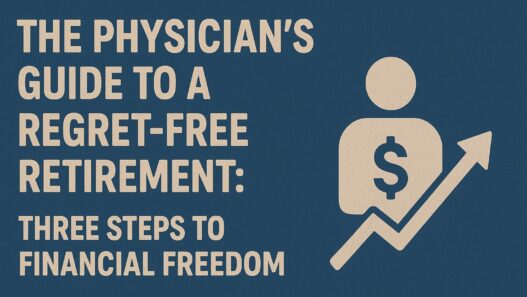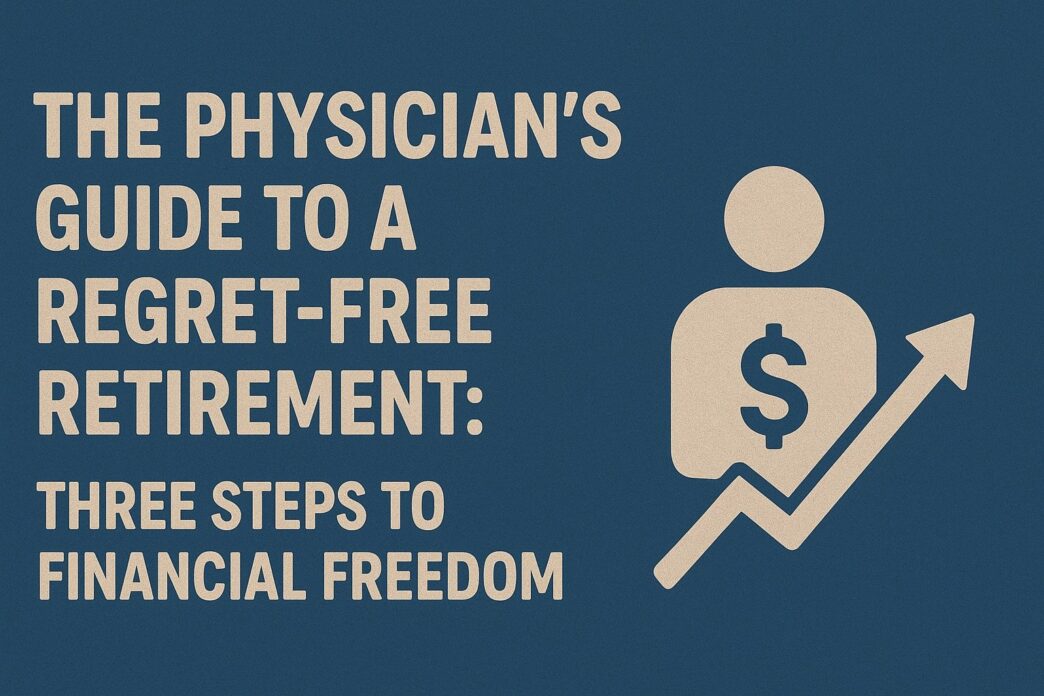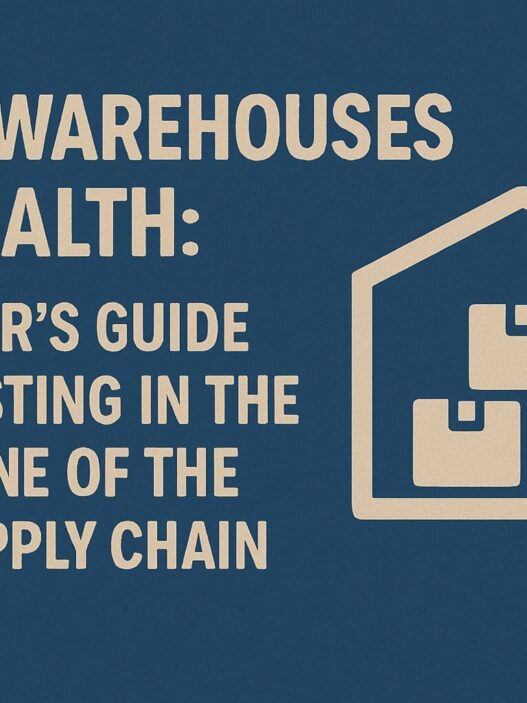As physicians, we're trained to analyze, research, and seek the optimal solution for every problem. It's served us well in medicine, but it's absolutely destroying our retirement planning.
I've watched hundreds of physician families get stuck in analysis paralysis, endlessly researching investment strategies while their money sits in savings accounts earning nothing. Others fall victim to complexity bias, chasing alternative investments and side hustles that promise higher returns but deliver headaches instead.
The truth is, retirement planning for physicians doesn't need to be complicated. In fact, the more complex you make it, the more likely you are to fail.
After working with physician families for years, I've distilled successful retirement planning into three straightforward steps that work regardless of your specialty, income level, or how much you currently have saved.
Step 1: Create Clear, Specific Goals (With Realistic Assumptions)
The emphasis on specific goals is sound, but we need to address some critical gaps in the planning assumptions.
Building Realistic Retirement Projections
A clear goal might look like this: “We want to stop working at 58, maintain our current $150,000 annual lifestyle (in today's dollars), have a paid-off home, spend $40,000/year on travel until age 75, and fund college for our two children.”
However, this needs several important adjustments:
Healthcare cost reality: Healthcare expenses typically increase at 5-7% annually, well above general inflation.
Plan for healthcare costs to consume 15-20% of your retirement budget, potentially more as you age. For early retirees, individual health insurance can cost $2,000-3,000+ monthly for a family.
Long-term care planning: 70% of people will need some form of long-term care. With costs averaging $50,000-100,000+ annually, this requires specific planning through insurance, self-funding, or hybrid strategies.
Inflation assumptions: While 3% general inflation is reasonable historically, use 4-5% for healthcare, education, and lifestyle expenses. Your retirement expenses may not stay constant – many retirees spend more in early active years, less in middle years, then more in late years due to healthcare.
The College Funding Reality Check
While most physicians do pay for college, the statement that “all physicians pay for college regardless” oversimplifies a complex decision. Consider these factors:
- Opportunity cost: Every dollar saved for college is a dollar not growing tax-deferred for retirement
- Financial aid impact: 529 plans and other college savings reduce financial aid eligibility
- Alternative strategies: Some physicians strategically prioritize retirement savings, then use current income, loans, or smaller targeted savings for college
The key is making an intentional decision rather than defaulting to either extreme.
Step 2: Optimize Your Investment Strategy (With More Precision)
The emphasis on simplicity is valuable, but the investment guidance needs more nuance and precision.
Asset Allocation and Risk Management
Age–appropriate allocation: A 30-year-old physician can handle more equity risk than someone 5 years from retirement. Rather than rigid formulas, consider your risk tolerance, time horizon, and financial goals.
Many financial planners now recommend maintaining higher equity allocations longer, given increased life expectancies and longer retirement periods.
International diversification: A reasonable allocation might be 60% US stocks, 30% international developed markets, 10% emerging markets, adjusted based on your total portfolio and risk tolerance.
Bond allocation consideration: While growth focus makes sense for young physicians, bonds provide stability and rebalancing opportunities. Consider a modest bond allocation (10-30%) even in the accumulation phase, recognizing that current low yields may require different strategies than historical periods.
The Reality of Withdrawal Rates: Beyond the Engineering Precision
Here's the problem with over-engineering: One of the biggest mistakes in retirement planning is injecting false precision into withdrawal rate calculations.
The data underlying safe withdrawal rates comes from less than 100 years of market returns in a single country, with fewer than four independent 30-year data points.
Arguing about whether 3.67% or 3.74% is the “correct” withdrawal rate is meaningless when the underlying data can't support that level of precision.
The historical reality of the 4% rule: Bill Bengen updated his original recommendation to 4.7% in 2024, but the historical data shows even more optimism may be warranted.
Looking at the Trinity Study data for a 75/25 stock/bond portfolio over 30 years, a 4% withdrawal rate has never failed — it has a 100% historical success rate.
Even a 5% withdrawal rate worked over 80% of the time, and on average, portfolios ended up 2.7 times larger than their starting value after 30 years.
The TIPS reality check: At current yields, a portfolio of 100% Treasury Inflation-Protected Securities (TIPS) can support a 4.36% withdrawal rate for 30 years with zero market risk.
This provides a baseline showing that even without taking any investment risk, you can achieve withdrawal rates above 4%.
Retirement duration matters enormously: The average American retires at 64, and life expectancy for a 64-year-old is 17-20 years, not 30 years.
For a 20-year retirement with a 75/25 portfolio, the Trinity Study shows you can withdraw 9% annually and still succeed half the time. The obsession with 30-year retirement periods often doesn't match reality.
The Folly of Ultra-Conservative Withdrawal Rates
Some researchers advocate for withdrawal rates as low as 2-2.5%, citing various future risks. However, this level of pessimism ignores that the historical data already includes:
- The Great Depression
- World War II
- Multiple recessions and bear markets
- The stagflation of the 1970s
- The 2008 financial crisis
- The COVID pandemic
If you believe the future will be worse than all of that combined, you might be suffering from what behavioral economists call “pessimism bias” — pessimism sounds smarter and more intellectually sophisticated than optimism.
The real-world impact: Consider a physician who needs $120,000 annually and can save $50,000 per year. The difference between a 5% withdrawal rate (requiring 25 years of saving) and a 2.5% withdrawal rate (requiring 36 years of saving) is 11 years of work.
This could mean retiring at 58 with 17 “go-go years” versus retiring at 69 with only 6 go-go years.
A Practical Withdrawal Strategy
The “adjust as you go” approach: Rather than rigidly adhering to a predetermined withdrawal rate for decades, most successful retirees adjust their spending based on portfolio performance and life circumstances.
This is exactly how you managed money during your working years — when income was good, you spent more; when times were tough, you adjusted.
Starting framework:
- Traditional retirement (30 years): Start around 4-5% and adjust based on early performance
- Early retirement (40+ years): Start around 4% with flexibility to adjust
- Very early retirement (50+ years): Start around 3.5-4% with planned flexibility
Dynamic adjustment strategies:
- In strong market years, you can spend more
- After poor market performance, temporarily reduce withdrawals
- If you experience poor returns in the first few years (sequence of returns risk), be more conservative
- If early years go well, you can be more aggressive later
Tax Strategy Refinements
Traditional vs. Roth decisions: Don't automatically max everything. Consider:
- Current marginal tax rate vs. expected retirement rate
- Tax diversification between traditional and Roth accounts
- State tax implications (some physicians move to no-tax states in retirement)
Mega backdoor Roth clarification: This strategy requires:
- Employer plan allowing after-tax contributions beyond the $23,500 limit (2025)
- In-service withdrawals or plan conversions to Roth
- Coordination with overall tax strategy
Many plans don't offer this option, and implementation requires careful coordination.
Step 3: Calculate, Document, and Implement (With Practical Precision)
Reverse Engineering Your Retirement
The biggest benefit of withdrawal rate guidelines is determining how much you need to accumulate. Using the examples above:
- 5% withdrawal rate: Need 20 times annual expenses
- 4% withdrawal rate: Need 25 times annual expenses
- 3.5% withdrawal rate: Need 28.6 times annual expenses
- 3% withdrawal rate: Need 33.3 times annual expenses
For a physician needing $120,000 annually:
- 5% approach: Need $2.4 million
- 4% approach: Need $3.0 million
- 3.5% approach: Need $3.4 million
- 3% approach: Need $4.0 million
Managing Withdrawal Rate Anxiety
If you find yourself gravitating toward very low withdrawal rates due to anxiety about running out of money, consider these alternatives:
Create a spending floor:
- Delay Social Security to age 70 (the best inflation-indexed annuity available)
- Purchase Single Premium Immediate Annuities (SPIAs) to cover basic expenses
- Ladder TIPS to provide guaranteed inflation-adjusted income
Maintain flexibility:
- Keep some funds in taxable accounts for unexpected needs
- Maintain skills that could generate part-time income if needed
- Consider geographic flexibility (moving to lower cost areas if necessary)
Essential Planning Elements
Emergency funding: Maintain 6-12 months of expenses in liquid savings, separate from investment accounts. Physicians face unique income volatility and malpractice risks requiring robust emergency planning.
Insurance optimization:
- Disability insurance: Often 60-70% of income, own-occupation coverage crucial
- Life insurance: Term coverage during accumulation years, potentially permanent insurance for estate planning
- Umbrella liability: Protect against malpractice and personal liability risks
Estate planning basics:
- Updated wills and trusts
- Beneficiary designations on all accounts
- Power of attorney documents
- Consider life insurance for estate liquidity
Implementation Framework
Phase 1: Foundation (Years 1-5 of Practice)
- Establish an emergency fund
- Optimize insurance coverage
- Begin retirement contributions (at least employer match)
- Eliminate high-interest debt
- Basic estate planning documents
Phase 2: Acceleration (Peak Earning Years)
- Maximize tax-advantaged savings
- Implement tax optimization strategies
- Build taxable investment accounts
- Reassess insurance needs
- Estate planning updates
Phase 3: Transition Planning (5-10 Years to Retirement)
- Stress-test retirement projections using realistic withdrawal strategies
- Develop flexible spending plan with contingencies
- Consider Roth conversions in lower-income years
- Healthcare transition planning
- Legacy planning considerations
Addressing Specific Physician Challenges
Income Timing Reality
Most physicians don't earn significant income until their 30s, requiring more aggressive savings rates to catch up. This might mean saving 25-35% of gross income rather than the 15-20% often recommended.
Physician incomes often peak in their 50s-60s, creating opportunities for catch-up contributions and accelerated savings.
Career Transition Planning
Plan for potential career changes, reduced hours, or early retirement due to burnout. Build flexibility into your financial plan for these possibilities.
If considering practice ownership, understand the additional complexity this adds to retirement planning, including business valuation, succession planning, and asset protection.
The Reality Check: Rich, Broke, or Dead
Here's the uncomfortable truth about retirement planning: you're far more likely to end up dead with a huge portfolio than broke and wishing you had more. The data consistently shows that the vast majority of retirees maintain or even increase their wealth throughout retirement.
The “safe” withdrawal rate movement has created a generation of anxious retirees sitting on enormous portfolios they're afraid to spend. Don't let perfectionism and fear rob you of the life you've worked so hard to build.
While professional financial planning requires appropriate caution, we must balance that caution with historical reality and practical considerations. The framework remains sound: set clear goals, implement efficient investment strategies, and maintain reasonable flexibility.
Bill Bengen's updated 4.7% recommendation provides one data point, but the broader evidence suggests that physicians who maintain some flexibility can likely withdraw 4-5% initially and adjust as circumstances require.
The key is building in flexibility rather than rigidly adhering to any single number for decades.
For physicians planning early retirement, remember that the difference between a 4% and 2.5% withdrawal rate could mean 11 additional years of work — potentially trading away your healthiest, most active retirement years for mathematical precision that may not be necessary.
Consider working with a fee-only CFP who specializes in physician financial planning, but don't let the perfect become the enemy of the good.
Your goal is financial independence that allows you to enjoy the life you've worked so hard to build, not to optimize every decimal point of a withdrawal calculation.
Start with something around 4% of your portfolio value and adjust as you go. It's that simple. The more uncomfortable you are with that approach, the more you should consider SPIAs, TIPS ladders, and other guaranteed income sources.
The more comfortable you are with flexibility, the more you can likely spend and still leave a substantial legacy.
Your medical training taught you to balance evidence with practical application. Apply that same judgment to your retirement planning, and don't let analysis paralysis prevent you from living the retirement you've earned.













